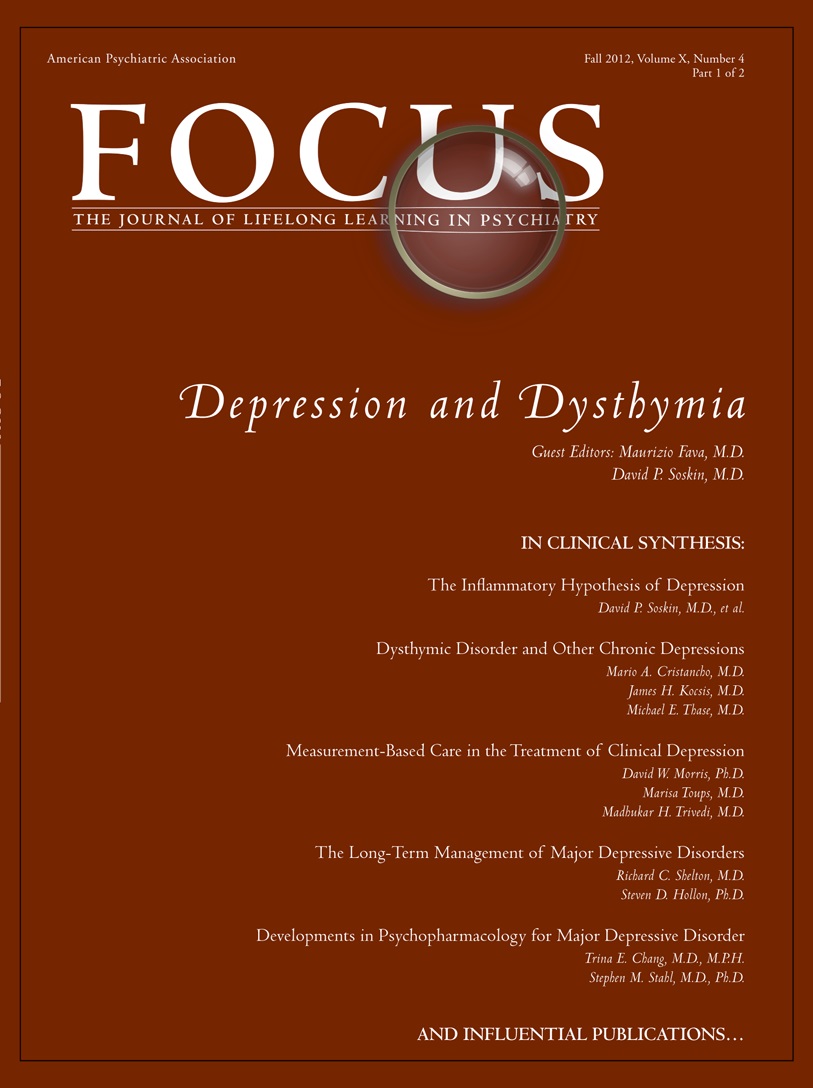From the Guest Editors
Major depressive disorder (MDD) has the highest lifetime prevalence rate of any psychiatric disorder (1) and is expected to be the second leading cause of disability worldwide by the year 2020 (2). Despite the historical decline in the development of antidepressants (3), recent neurobiological discoveries have significantly advanced our understanding of the classification, measurement, and treatment of MDD. Every day, clinicians in practice face the challenge of both recognizing and treating this highly disabling condition.
The current issue of FOCUS reviews this exciting and clinically salient research, including the expanding evidence for natural medicines as augmenting agents and monotherapies; the phenomenology and treatment of dysthymic disorder and chronic subforms of MDD; psychological and pharmacological interventions for the prevention and maintenance of MDD; and the significant advantages—both for patient outcomes and clinician efficiency—of a metric-based system to assess disease progression and treatment response.
We also provide a review of emerging data linking inflammatory processes to the pathophysiology and treatment of MDD. This is a particularly exciting area, which exemplifies how the field is moving forward from historically bound, monoamine-based hypotheses. Similarly, two other reviews in this issue of FOCUS discuss novel pharmacological and device-based treatments.
We are particularly grateful to all the authors of this special edition, who are leading researchers and gifted scholars, for their terrific contributions, which we hope will provide a state of the art summary of what we know about this important disorder.
1 : Lifetime prevalence and age-of-onset distributions of DSM-IV disorders in the National Comorbidity Survey Replication. Arch Gen Psychiatry 2005; 62:593–602Crossref, Google Scholar
2 : The STAR*D Project results: a comprehensive review of findings. Curr Psychiatry Rep 2007; 9:449–459Crossref, Google Scholar
3 : Separation of anxiety and depressive disorders: blind alley in psychopharmacology and classification of disease. BMJ 2003; 327:158–160Crossref, Google Scholar



